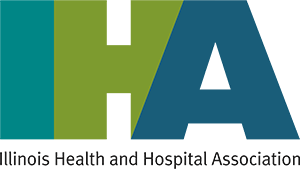Limitation on Charges
Summary of IRS Hospital Tax-Exemption Requirements Section 501(r) Final Rule
Hospitals are required to limit the amount charged to an individual eligible for a financial assistance policy (FAP) for emergency or other medically necessary care to no more than the amount generally billed to those with insurance and less than gross charges for all other medical care covered under the FAP.
Look-Back Method: The amounts generally billed (AGB) can be determined under a look-back method that includes all claims of:
- Medicare fee-for-service;
- Medicare plus all private health insurers;
- Medicare, private insurance and Medicaid claims; or
- Medicaid alone.
The calculation under the look-back method divides total claims paid in full by the gross charges associated with those claims. Hospitals can do this on an aggregate basis for all emergency and medically necessary care or by categories such as inpatient, outpatient or departmental.
Prospective Method: Alternately, hospitals can use a prospective method that includes using the billing and coding process the hospital would use if the FAP-eligible individual were a Medicare fee-for-service patient or a Medicaid patient, and setting the AGB at the total amount Medicare or Medicaid would allow for the care, including the patient’s personal responsibilities.
Medicaid managed care claims are considered Medicaid, but Medicare Advantage claims are considered as private health insurance.
Paid in full is defined as the amount “allowed” by health insurers during the prior 12-month period. This includes both the amount to be reimbursed by the insurer and the amount owed by the individual, regardless of whether actually paid and disregarding any discounts applied to their portion.
Claims to be counted are based on whether the claim is allowed during the prior 12-month period, not whether the care was provided during that time. Hospitals may include all claims, not just emergency and medically necessary care, in the calculation, but the IRS assumes there would not be a significant difference.
Hospitals are allowed to include value-based care claims if they can reasonably allocate a capitated payment by an insurer to care received by particular individuals during the period, and have tracked gross charges for that care. The IRS also will continue to consider alternative methods for determining AGB.
The AGB applies to any FAP-eligible individual, both insured and uninsured, but the amount charged is only the amount the individual is personally responsible for paying, after all deductions and discounts have been applied and less any amounts reimbursed by insurers. The AGB limit for an FAP-eligible insured individual—what they are responsible for paying—is no more than the AGB after all reimbursements by the insurer have been made. Hospitals are allowed to charge an individual less than AGB.
- Hospitals may change the method used to determine AGB at any time, but must update the FAP to describe the method prior to implementing it. Hospitals within a system may choose different methods.
- Hospitals must calculate the AGB based on individual hospital claims and charges and not system-wide, unless multiple hospitals are covered under the same Medicare provider number.
- Hospitals have up to 120 days after the end of the 12-month period used in calculating the AGB percentage to begin applying the new percentage. The FAP must be updated to reflect new AGB percentages.
- The prohibition of gross charges applies only to FAP-eligible individuals.
- There is a safe harbor for hospitals that charged more than AGB to a FAP-eligible individual if the hospital refunds any amounts paid in excess of the amount the individual should have paid under the FAP and they submit an application.

